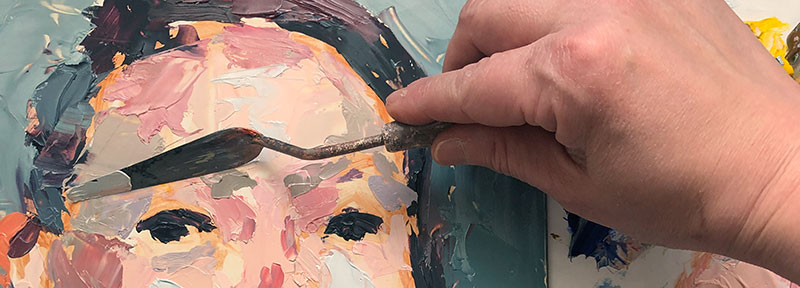Part 2 of this intro to oil painting tutorial walks you through every step of the process to paint a lobster in a still life. Watch Part 1.
- 30 second short (palette knives)
- 1 min. short (oil mediums)
- 1 min. short (filbert brushes)
- 1 min. short (brush sizes)
- 1 min. short (brush cleaning tanks)
- 1 min. short (storing paintings)
- 4 min. video (cleaning brushes)
- 3 min. video (glass palettes)
- 3 min. video (glazing)
- 71 min. video(tutorial part 1)
- 38 min. video (tutorial part 2)
- Guerra Paint playlist
Prof Lieu talks about how to premix your colors with a palette knife, lighting & shadow, brush techniques, how to layer your oil paint, the differences between opaque and transparent paint, glazing techniques, how to paint details, and more.
Video Walkthrough
- Seeing colors as a group
- Pre-mixing colors
- Squinting at the lobster
- Palette knife
- Lighting on the lobster
- Warm & Cool colors
- Mixing base colors
- Adding small quantities of color
- Mixing a shadow tone
- Mixing the highlights
- Sketching with paint
- Painting is not about accuracy
- Blocking in colors
- Painting the negative space
- Assigning 1 color to each brush
- Training your eye to see colors
- Tube wringer
- Don’t critique yourself as you paint
- Reinforcing the lighting
- Glazing (transparent paint)
- Opaque vs. transparent paint
- Dry brushing techniques
- Painting details
- Is the painting is done?
Prof Lieu’s Tips

I think the thing about palette knives is that they’re just a really awkward tool, so if you don’t have someone right there showing you how to use it, it doesn’t make a lot of sense!

There’s no “correct” way to hold it, just that you have to press down.
So what you’ll see me do in a lot of the demos is I am pressing down to mix, and then I scrape up what I have mixed with the side of the palette knife so the color doesn’t spread all over my palette.
Art Supplies
Oil Medium Recipe
- 1 part linseed oil
- 1 part stand oil
- 3 parts Gamsol (or another solvent)
Oil Paint Colors
As a free educational source, Art Prof uses Amazon affiliate links (found in this page) to help pay the bills. This means, Art Prof earns from qualifying purchases.


